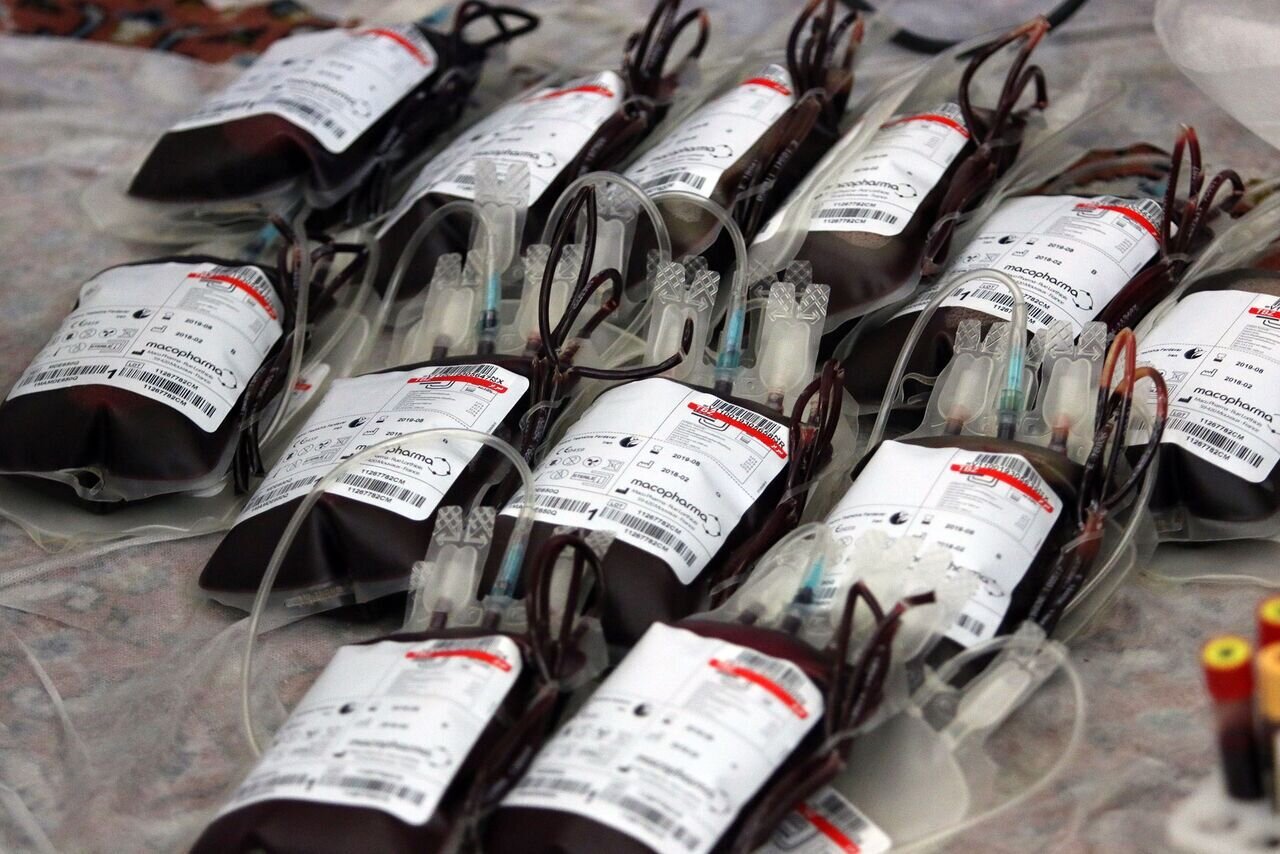Blood storage duration rises to 8-15 days

THRAN – Iran’s blood storage has increased from four or five days to eight and sometimes to 15 days, according to the CEO of the Blood Transfusion Organization.
Mostafa Jamali said implementation of molecular and antibody screening tests has commenced in some provinces of the country, and it is scheduled to be conducted nationwide by the end of the current Iranian year (March 2024 – March 2025) to eliminate the risk of transmission of serious diseases by transfusion.
Presently, there is an ample supply of blood and its products storage with no shortage in the country, the official added, IRIB reported.
Jamali went on to talk about leukocyte filter bags, which reduce complications associated with transfused blood, saying their production has reached 80 percent.
In the first two months of the current Iranian year which started on March 20, a total of 435,000 blood units were donated which indicates a 12 percent increase compared to the same period last year.
Tehran province accounted for more than 17 percent of the total donation by receiving over 74,600 units of blood from donors followed by Khorasan Razavi and Fars provinces, each with almost seven percent share, IRNA quoted Bashir Haji-Beigi, the Blood Transfusion Organization spokesman, as saying.
He went on to say that the highest blood donation growth was recorded in Kohgiluyeh-Boyerahmad, Sistan-Baluchestan, and Markazi provinces with 52 percent, 32 percent, and 28 percent rise, respectively, IRNA reported.
Continuous and regular blood donation was 55 percent in the first five months of the year; Semnan (66 percent ), Yazd (65 percent), and Qom (almost 65 percent) provinces ranked first to third, respectively, the official noted.
Blood donation by women has also experienced a 16 percent increase compared to the same period last year as they donated 19,088 units of blood.
Kohgiluyeh-Boyerahmad with 229 units of blood donated had the highest increase in blood donation by women which shows a 127 percent increase compared to 101 units last year.
Yazd with around 430,000 units of blood and Kermanshah with 740,000 units recorded 97 percent and 86 percent rise in women’s blood donation respectively.
Blood donation in Iran
The average blood donation rate in Iran is 26 per thousand people which places the country in a good situation among other countries.
According to the World Health Organization, the median blood donation rate in high-income countries is 31.5 donations per 1000 people. This compares with 16.4 donations per 1000 people in upper-middle-income countries, 6.6 donations per 1000 people in lower-middle-income countries, and 5.0 donations per 1000 people in low-income countries.
Of the 118.5 million blood donations collected globally, 40% of these are collected in high-income countries, home to 16% of the world’s population.
In low-income countries, up to 54 % of blood transfusions are given to children under 5 years of age; whereas in high-income countries, the most frequently transfused patient group is over 60 years of age, accounting for up to 76% of all transfusions.
Based on samples of 1000 people, the blood donation rate is 31.5 donations in high-income countries, 16.4 donations in upper-middle-income countries, 6.6 donations in lower-middle-income countries, and 5.0 donations in low-income countries.
In the past Iranian calendar year, which ended on March 19, some 2.223 million blood donations were registered across the country, an increase of 9.3 percent compared to the year before.
Last year, the blood donation rate reached 27 per thousand people. The highest rate was recorded in Mazandaran province with over 40,000 people donating blood. Semnan province, over 39,000, and Yazd province ranked second and third.
Women’s share of blood donation was equal to four percent. A total of 102,907 women donated blood which had increased compared to the previous year. However, women are expected to get more involved in blood donation.
The overall blood donation rate was over 54 percent in the country last year with Semnan (69 percent), Yazd (64 percent), and Qom (63 percent) provinces ranking the highest.
MT/MG
Leave a Comment